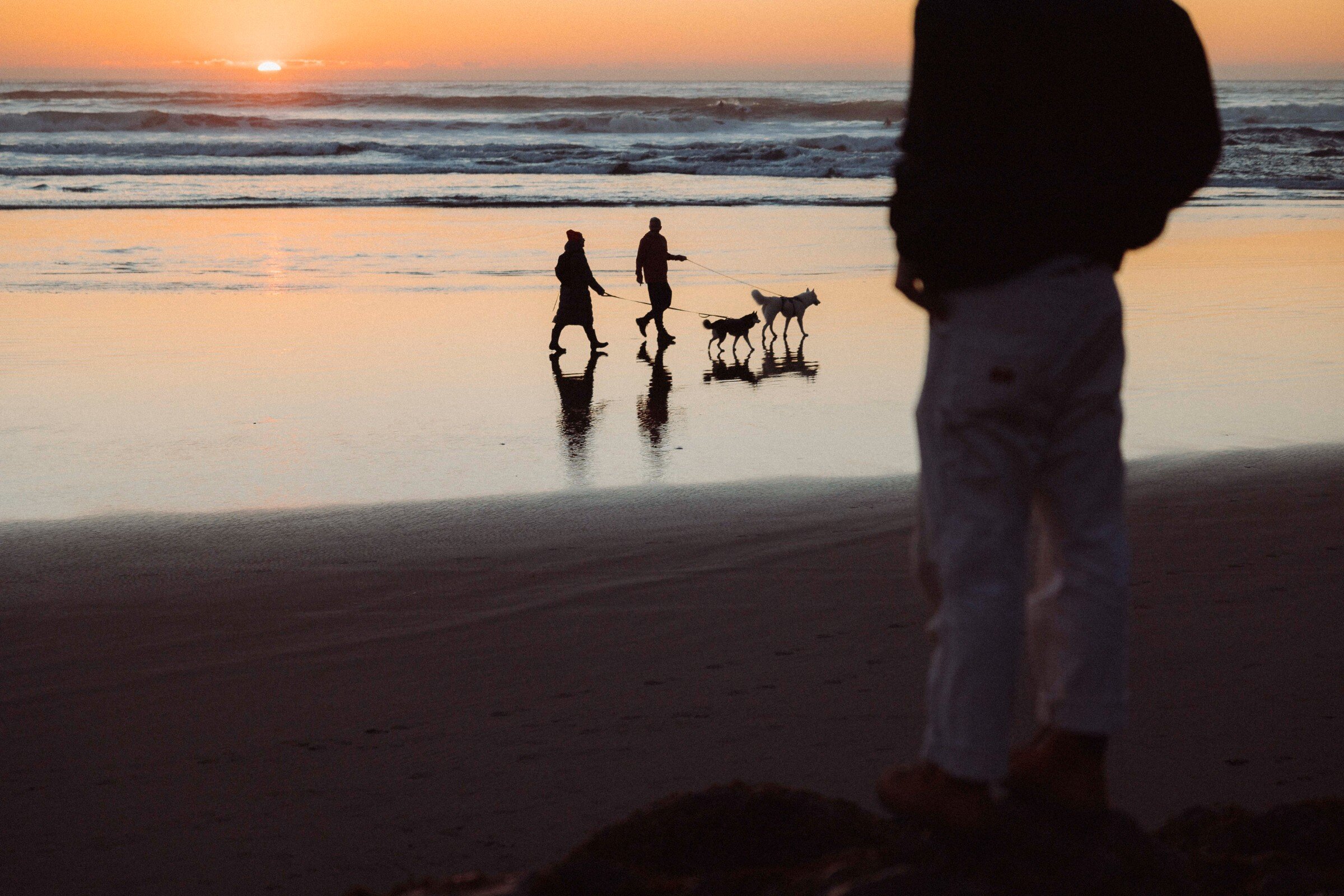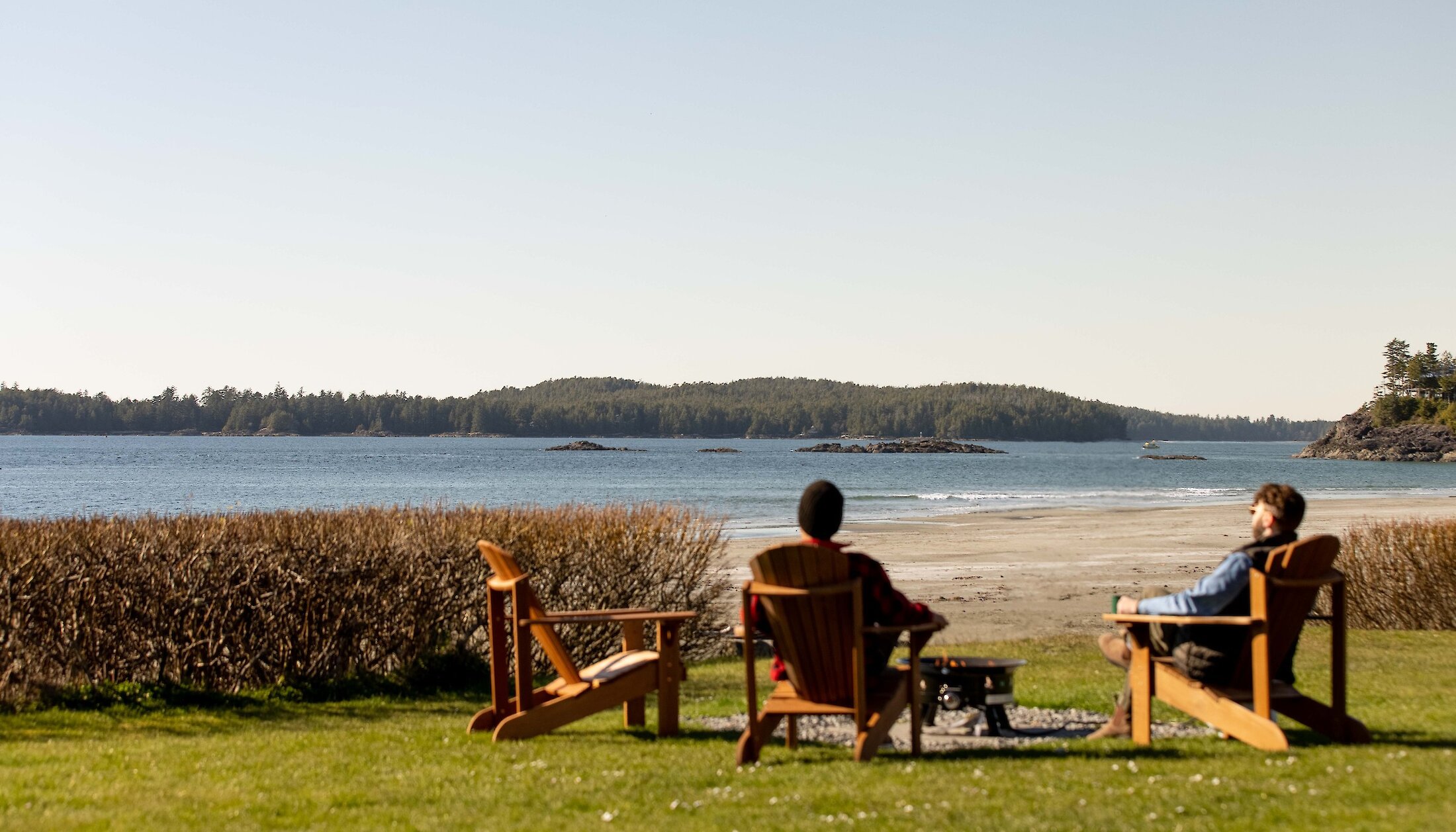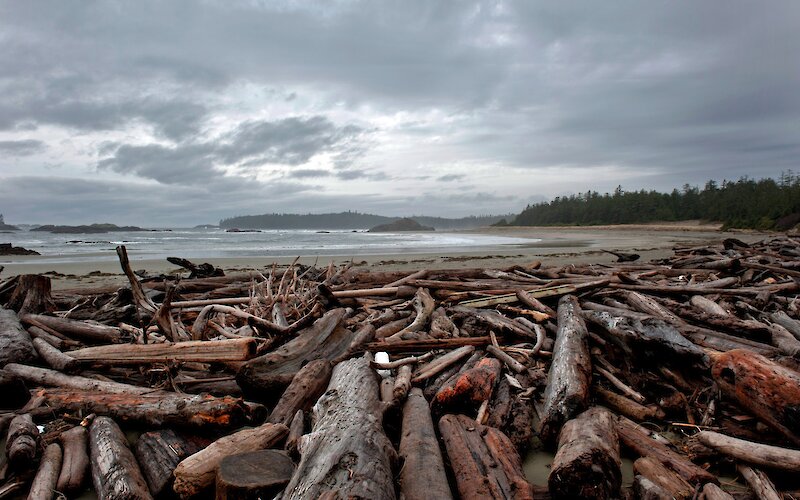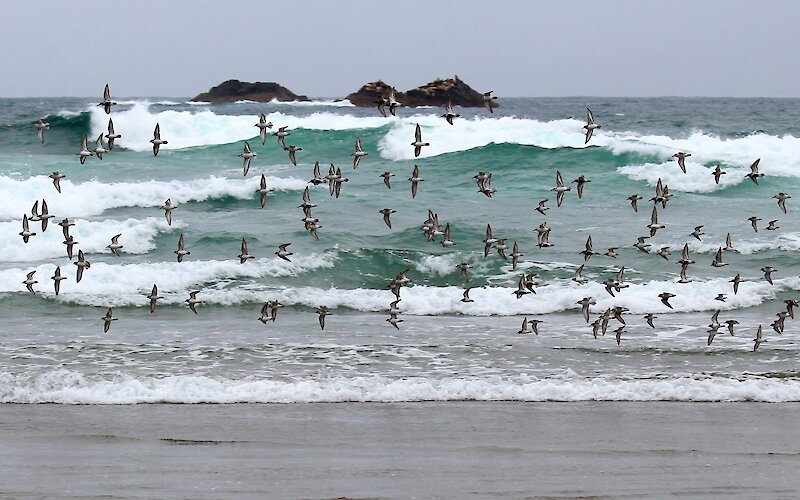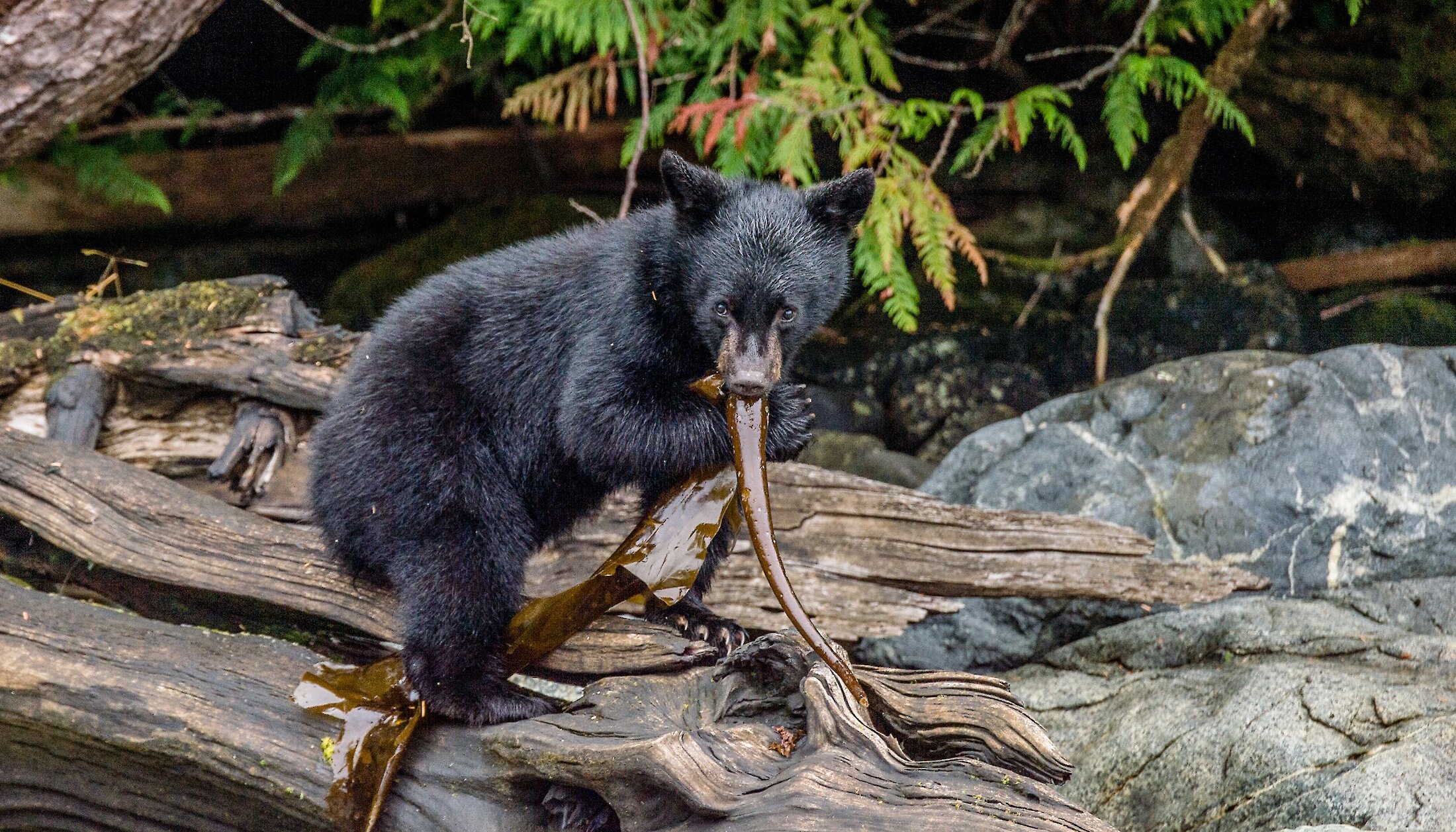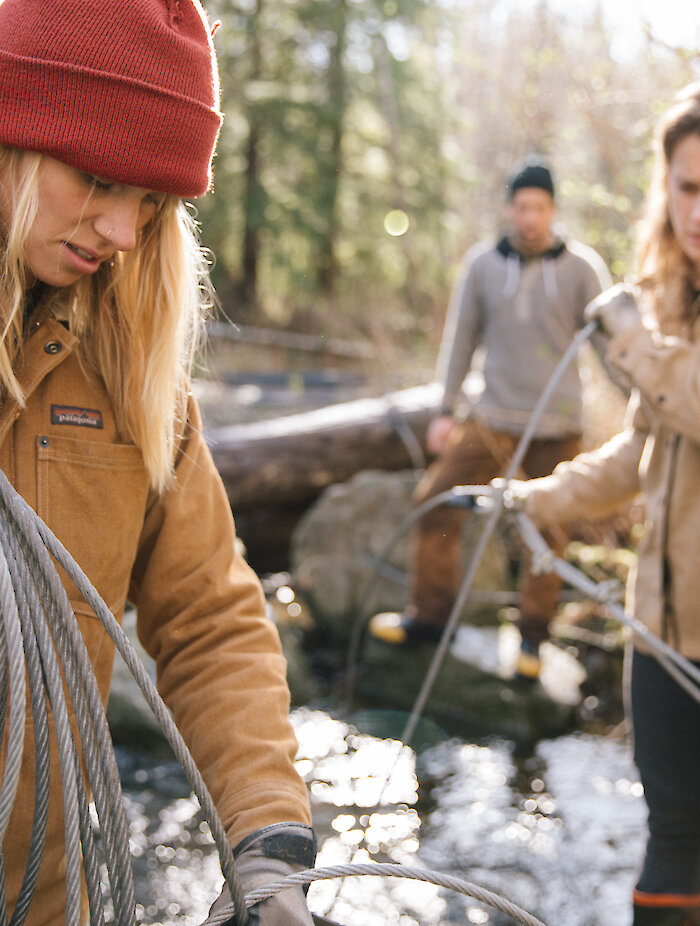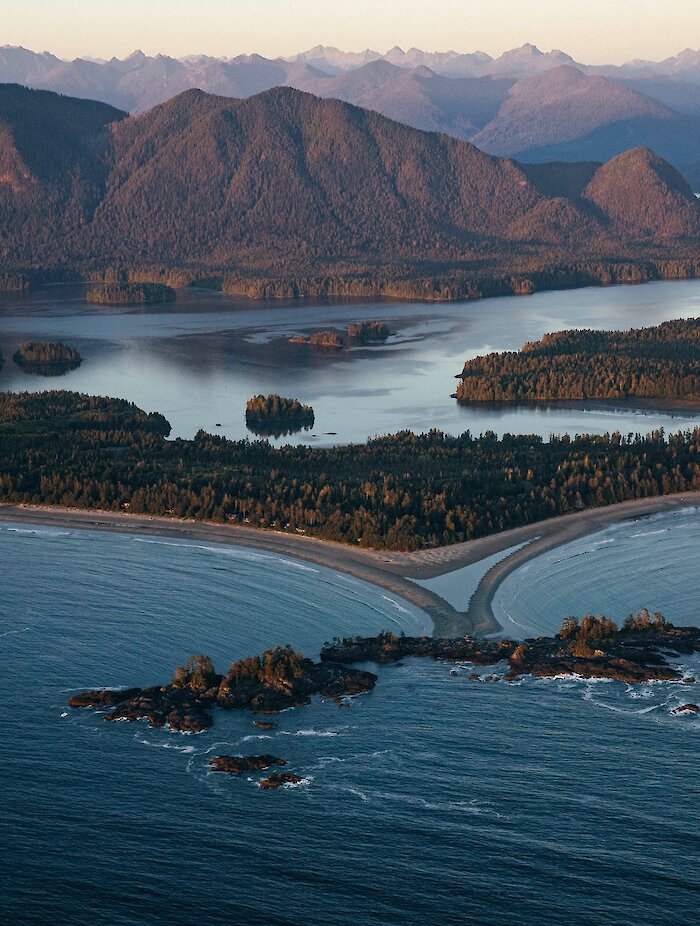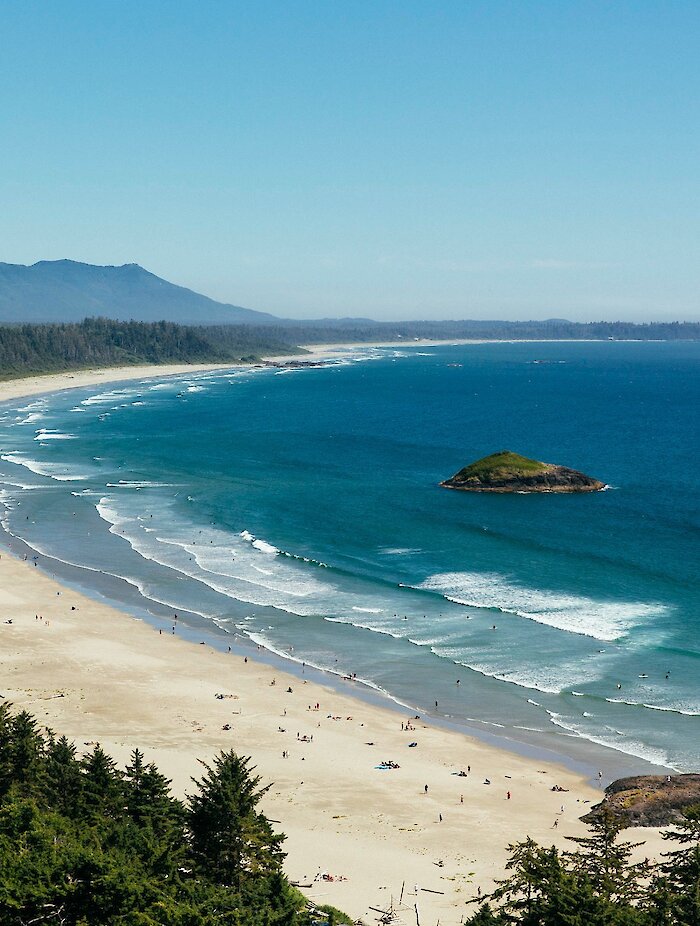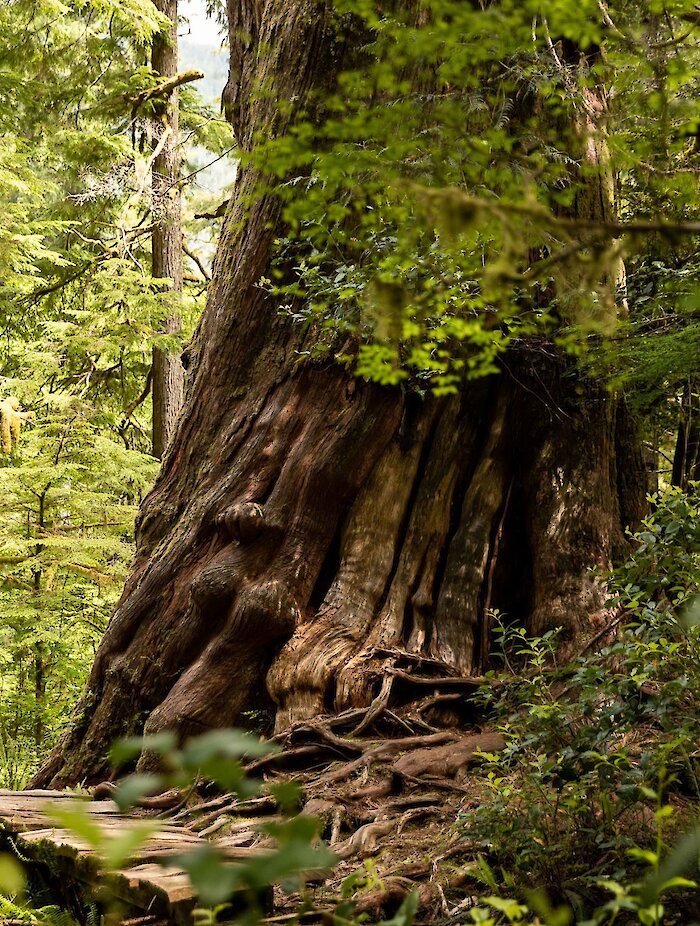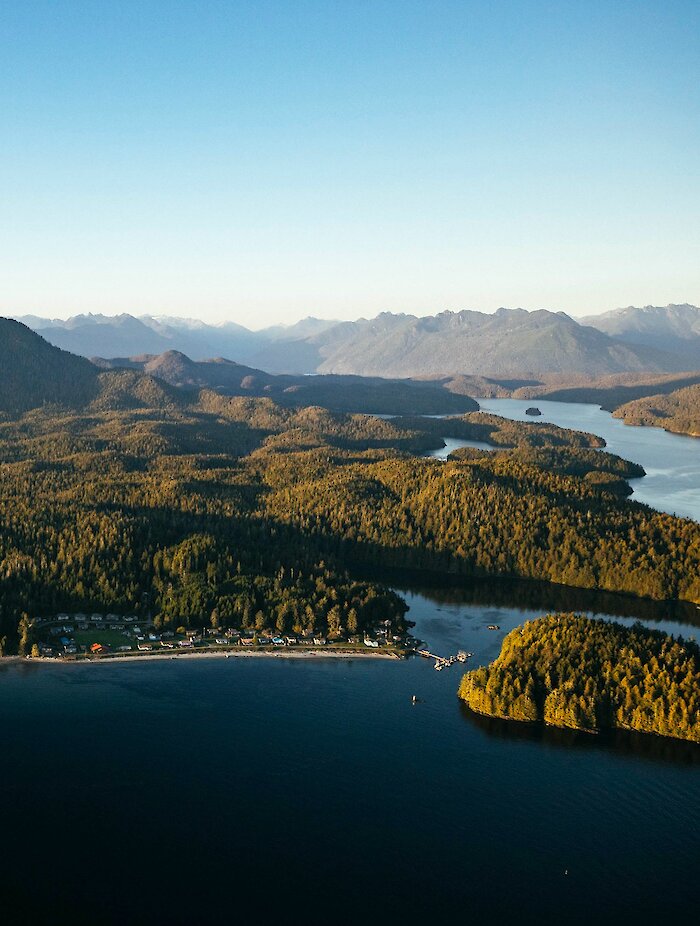Plan Your Trip Responsible Recreation
Designated a UNESCO Biosphere Region since 2000, Clayoquot Sound is a tapestry of thriving ecosystems. From the rainforest to the mudflats, intertidal zones to the Pacific Ocean, each life form is interconnected.
The continued guidance of the Nuu-cha-nulth People leads the stewardship of this area and its future well-being. Learn about their culture and values and take the ʔiisaak Pledge to understand what it means to recreate responsibility, respectfully, and safely.
For information on wildfire updates and water announcements, please check our advisories and bulletins.
Respect nature
Observe your surroundings as you walk through the forests, along the sand, and through the water. Respect for nature begins with understanding where you are and your impact on the environment. With many visitors each year, we all do our part to keep beaches and forests healthy. Here are some tips to keep nature thriving:
- Stay on the trails to avoid disturbing the forest floor.
- Admire nature but leave it in its place. Do not take anything from the beaches or forests.
- Don’t play music while hiking and keep a respectful distance from others.
- Take your garbage with you, including biodegradable food waste.
- Clean up after your dog.
- Do not fly drones.
- Join a beach cleanup or do your own. Marine debris collection stations are located at the Tofino Visitor Centre.
Due to our proximity to the Tofino Harbour Water Aerodrome and to the Tofino-Long Beach Airport (YAZ), drone use in and around the District of Tofino is restricted. Consult the Transport Canada regulations for more information.
Respect wildlife
The wildlife here - from migratory shorebirds to elusive bears and the fish in the sea - all live in careful balance. Here are tips to respect the creatures around you:
- Walk with caution on the intertidal zones and avoid stepping on marine life, including barnacles!
- Keep dogs on a leash to avoid wildlife conflict.
- Take your garbage with you, including biodegradable food waste.
- Don’t leave food out at any time. This includes while camping, having picnics, at your accommodation, or on the beach.
- Obtain proper permits for fishing.
- Harvest shellfish responsibly.
- Learn about wildlife safety and report sightings and injuries.
Wildlife safety FAQs
Prevent wildfires
Summers are getting increasingly warm and surrounding forests can be extremely dry. We ask that before you contemplate a fire, you do your due diligence on understanding the restrictions and regulations. Wildfires and fire bans generally start in summer and end in mid-October. Some other essential information to know:
- Understand and obey fire bans.
- If you decide to smoke, dispose of your extinguished butts safely in a receptacle.
- Follow the rules for beach fires (see below).
- Fireworks are only permitted on 5 specific days of the year (see below).
Beach fires and fireworks FAQ
Burning driftwood releases noxious chlorine-containing compounds called dioxins and furans. The saltwater within the wood is chemically altered and released into the air when burned. Please do not burn driftwood.
Conserve water
Make every drop count. Dryer summers are impacting Tofino’s water supply. Join this region’s long history of stewardship by using less water.
- Keep showers to 4 minutes or less.
- Turn off the tap when doing dishes, shaving, or brushing your teeth.
- Do laundry and dishes only when you have a full load.
Learn more on water conservation from the District of Tofino.
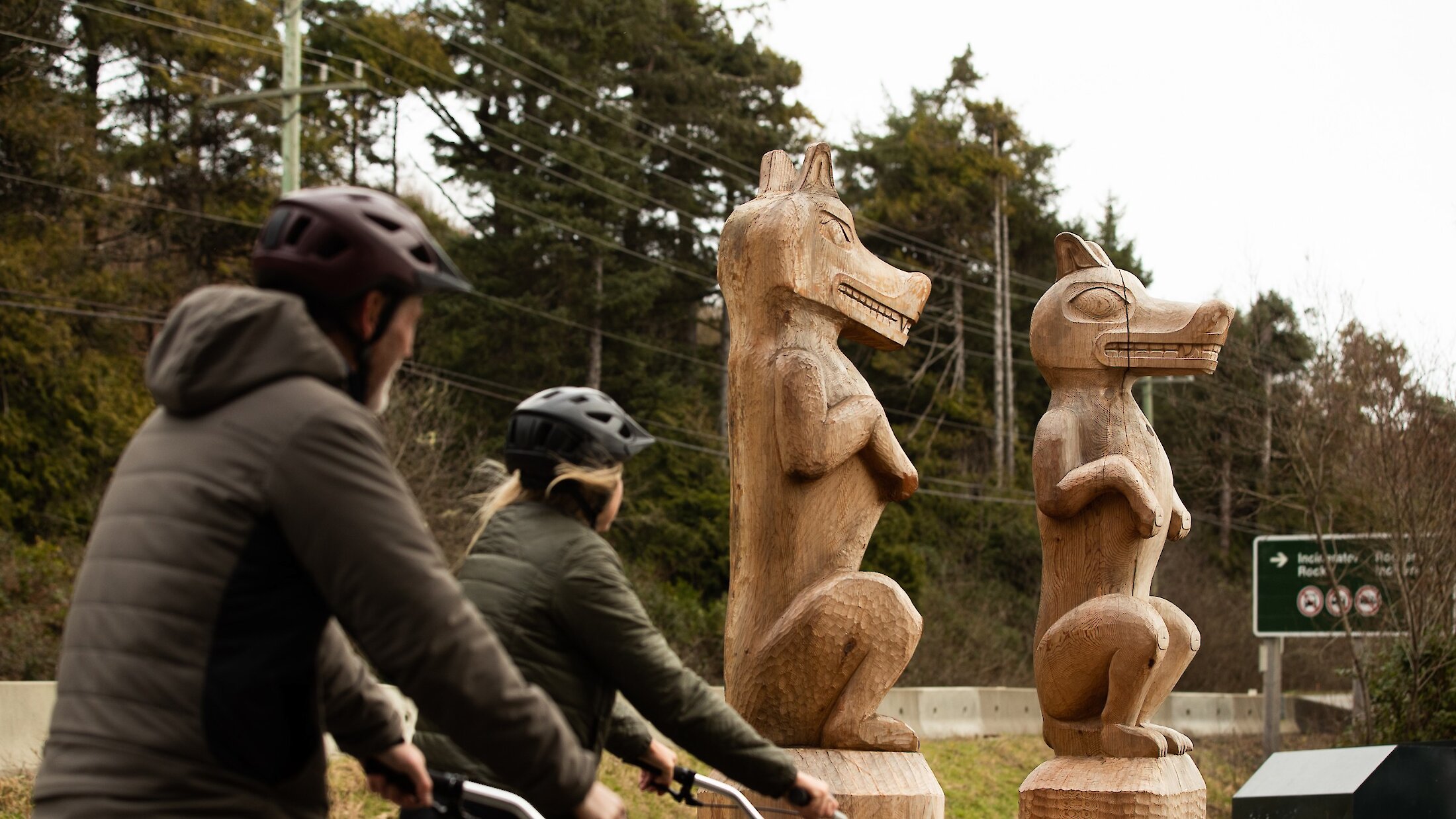
cover photo: Kyler Vos
"Visiting with Respect" / Parks Canada
Be safe on the coast
There are no lifeguards on any beach in Tofino or in Pacific Rim National Park Reserve. It is imperative to pay attention to signs at beach entrances for information on tides, rip currents, and emergency information. There are numbers for each beach entrance that will help direct traffic for EMTs in emergency situations.
Guests are welcomed with open arms in Načiks (Tofino), but they are expected to respect the land, animals, people, and community while travelling within the Hahuulthi (territory) of the ƛaɁuukwiatḥ (Tla-o-qui-aht) Ḥaw̓iiḥ (Hereditary Chiefs). Take the ʔiisaak Pledge to ensure that you travel here thoughtfully.
